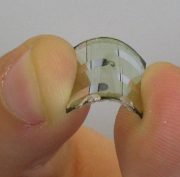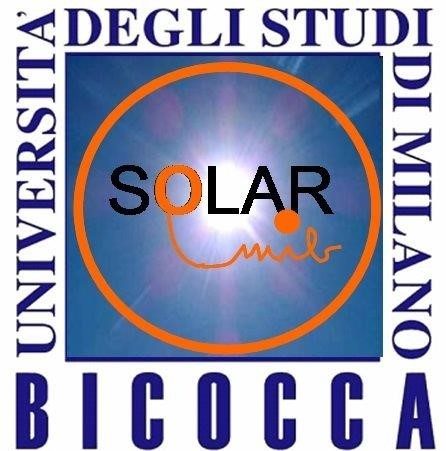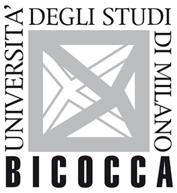 Organic electronics played a major role in the academic and industrial research of the last 30 years. OLEDs already evolved in a strong market reality, the other two notable members of the organic electronics "big three", photovoltaics (PV) and thin-film field effect transistors (TFTs), are expected to follow in the near future. When moving from the Lab to the Fab environment, a good performance itself is not enough to ensure a successful technology transfer. Active materials have to become available in large scale and through sustainable processes. At the processing level, all hazards have to be minimized thus leaving little room for toxic and/or flammable solvents. State of the art printable materials are far from optimal on this respect. The processes leading to their preparation are expensive and do not yet take into account established sustainability indexes like the E factor (kg of organic waste/kg of product).
Organic electronics played a major role in the academic and industrial research of the last 30 years. OLEDs already evolved in a strong market reality, the other two notable members of the organic electronics "big three", photovoltaics (PV) and thin-film field effect transistors (TFTs), are expected to follow in the near future. When moving from the Lab to the Fab environment, a good performance itself is not enough to ensure a successful technology transfer. Active materials have to become available in large scale and through sustainable processes. At the processing level, all hazards have to be minimized thus leaving little room for toxic and/or flammable solvents. State of the art printable materials are far from optimal on this respect. The processes leading to their preparation are expensive and do not yet take into account established sustainability indexes like the E factor (kg of organic waste/kg of product).
In the drug industry, where a commercial product often requires a number of synthetic steps comparable with those of most printable semiconductors, acceptable processes feature E factors in the 100-1000 range. The corresponding value for organic semiconductors is, for the very few cases where such indicator is discussed, in the excess of 10000. The road to the market of printable technologies is strongly connected with a quantum leap in the sustainability of preparation and processability of existing and new active materials. We aim at dramatically improving such scenario by working both at the active materials and processing levels:
- at the materials level, we will improve the synthetic access to known and performing active materials by drastically reducing the amount of organic solvents employed as well as the processing temperatures. We will also develop new materials according to a "sustainable by design" approach. Water will be the preferred, recyclable reaction medium.
- at the processing level, we will develop a general strategy to prepare waterborne inks starting from hydrophobic active compounds.
The synergic implementation of such strategies will bring about a drastic reduction in the main source of organic wastes connected with state of the art plastic electronics: the organic solvents. This result will not come at the expenses of performances as we will give access to the very same devices already performing at the state of the art level. The real advancement of knowledge will be on how materials are made and processed, without eroding performances. Moreover, we will develop original materials (polymeric latent pigments) having high performance and improved stability, another key issue for successful technological transfer. Key to the success of our strategy is the development of specifically engineered semiconducting surfactants able to self-assemble into micellar nanoreactors and nanoreservoirs.
Research team: Profs. Luca Beverina and Antonio Papagni (Full Professors), Dr. Mauro Sassi (Assistant Professor), Dr. Sara Mattiello (Post-Doctoral fellow), Chiara Ceriani (PhD student), Adiel Calascibetta (PhD student).
Selected publications:
- Riccardo Turrisi Luca Mascheroni Mauro Sassi Myles Rooney Nunzio Buccheri Riccardo Ruffo Antonio Facchetti Luca Beverina "Synthesis and Characterization of Squaraine‐Based Photocrosslinkable Resists for Bulk Heterojunction Solar Cells" Eur. J. Org. Chem. 2016, 4032–4040
- Dr. Gloria Zanotti Dr. Nicola Angelini Dr. Giuseppe Mattioli Dr. Anna Maria Paoletti Dr. Giovanna Pennesi Dr. Daniela Caschera Dr. Anatoly Petrovich Sobolev Prof. Luca Beverina Adiel Mauro Calascibetta Dr. Alessandro Sanzone Prof. Aldo Di Carlo Dr. Beatrice Berionni Berna Dr. Sara Pescetelli Dr. Antonio Agresti "[1]Benzothieno[3,2‐b][1]benzothiophene‐Phthalocyanine Derivatives: A Subclass of Solution‐Processable Electron‐Rich Hole Transport Materials" ChemPlusChem 2020, 85, 1 – 12
- Dr. Mauro Sassi Dr. Sara Mattiello Prof. Luca Beverina "Syntheses of Organic Semiconductors in Water. Recent Advancement in the Surfactants Enhanced Green Access to Polyconjugated Molecules" Eur. J. Org. Chem (2020) in press.

 '
'